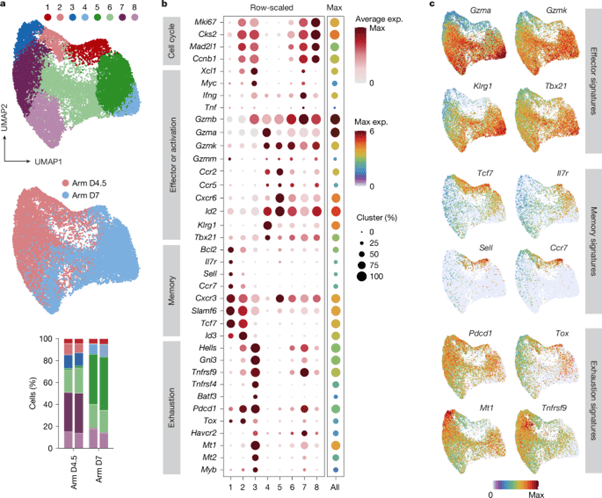T cells are essential components of the immune system, defending the body against infections and helping regulate immune responses. However, during persistent infections or cancer, some T cells enter a state known as exhaustion, where they lose their ability to fight disease effectively. This is a protective mechanism, designed to prevent excessive tissue damage—but it can also complicate treatment, particularly in oncology, where T cell exhaustion limits the effectiveness of immunotherapy.
Even in mild or uncomplicated infections, the body appears to anticipate worst-case scenarios, preparing for a potentially severe disease course much earlier than previously thought. In a new study, researchers reveal that the immune system produces T cell subtypes predisposed to exhaustion right at the onset of mild illness—previously believed to only emerge during chronic infections or cancer
Until now, it was widely believed that T cell exhaustion developed only after prolonged immune stimulation, such as in advanced cancers or chronic infections. But this study upends that assumption.
Key findings:
Using high-resolution immunological profiling, the research team found that even during early, moderate stages of infection, the immune system produces a variety of T cell subsets, including:
- Effector T cells capable of mounting a strong immune attack
- Memory T cells to protect against future reinfection
- Pre-exhausted T cells, which are less active but poised for more controlled responses

Figure 1: Acute LCMV-specific T cell populations contain cells with transcriptional similarity to exhausted T cells. a–c, A published dataset26 was used in which LCMV-specific, TCR-transgenic P14 T cells were transferred into host mice that were subsequently challenged with acute LCMV Armstrong (Arm) infection. P14 cells were re-isolated on days (D) 4.5 and 7 after infection. a, Uniform manifold approximation and projection (UMAP) shows eight identified clusters (top), the distribution of the two time points projected over the Louvain clusters (middle) and an illustration of the relative size of the cluster in each sample (bar graph at the bottom). b, Signature dot plot for the clusters. Colours encode average normalized expression values within the clusters, and circle size indicates the percentage of the cluster expressing the gene of interest. c, Feature plots illustrating selected effector, memory and exhaustion markers. Colours encode normalized expression values. Data are derived from a single previously published dataset.
This diversity appears to be a strategic immune feature, allowing the body to tailor the immune response based on how the disease progresses. This discovery expands the classical view of how T cell exhaustion arises and offers new insights into immune regulation.
This study provides a new framework for understanding how the immune system prepares for uncertainty—balancing aggression with restraint. It paves the way for therapies that modulate T cell behavior early, potentially improving outcomes in cancer, infectious diseases, and autoimmune conditions.
Journal article: Talyn Chu et al, 2025. Precursors of exhausted T cells are pre-emptively formed in acute infection. Nature.
Summary by Stefan Botha










